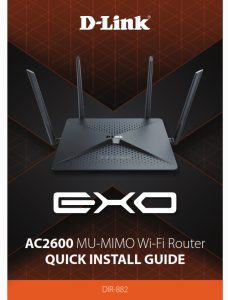
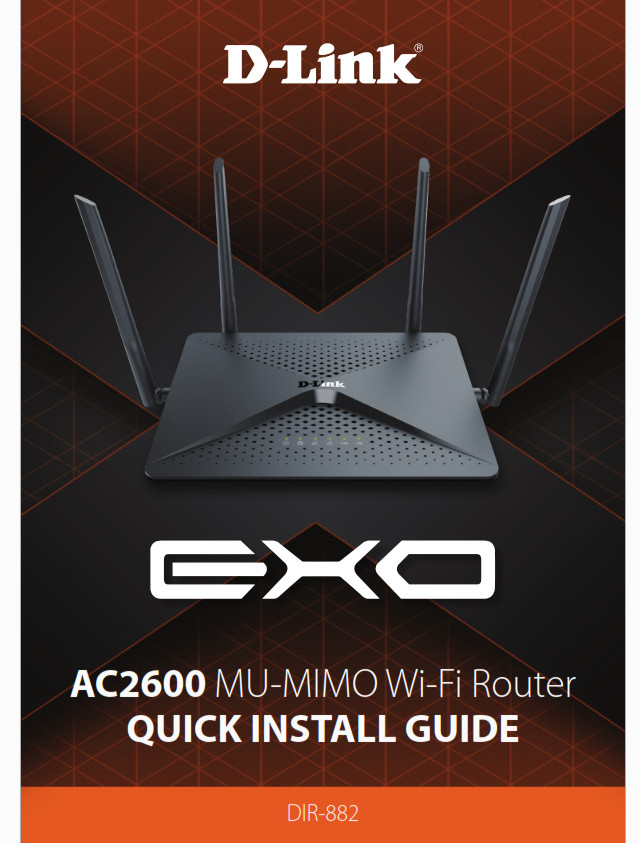
Package Contents

If any of the above items are missing, please contact your reseller.
Minimum Requirements
Network Requirements:
• An Ethernet-based broadband modem
App Configuration Requirements
• iPhone®, iPad® or AndroidTM smartphone or tablet (Refer to the mobile app’s store page to see if your device is compatible)
Web-based Configuration Requirements
• Computer, smartphone or tablet with a Web browser*
* We recommend using the latest available browser version for the best compatibility and performance.
Hardware Overview
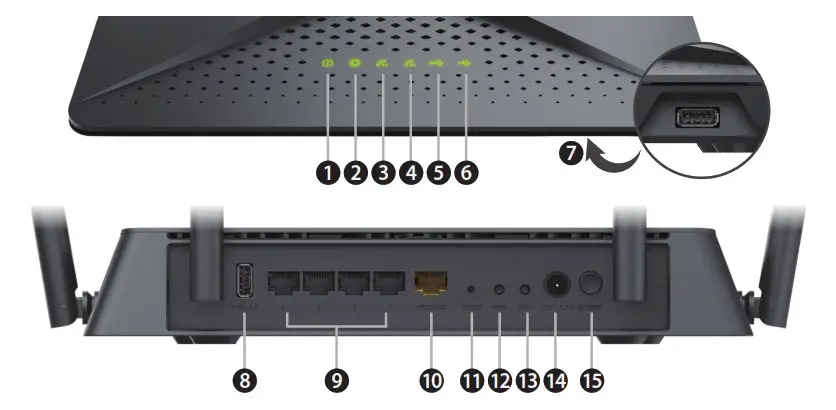
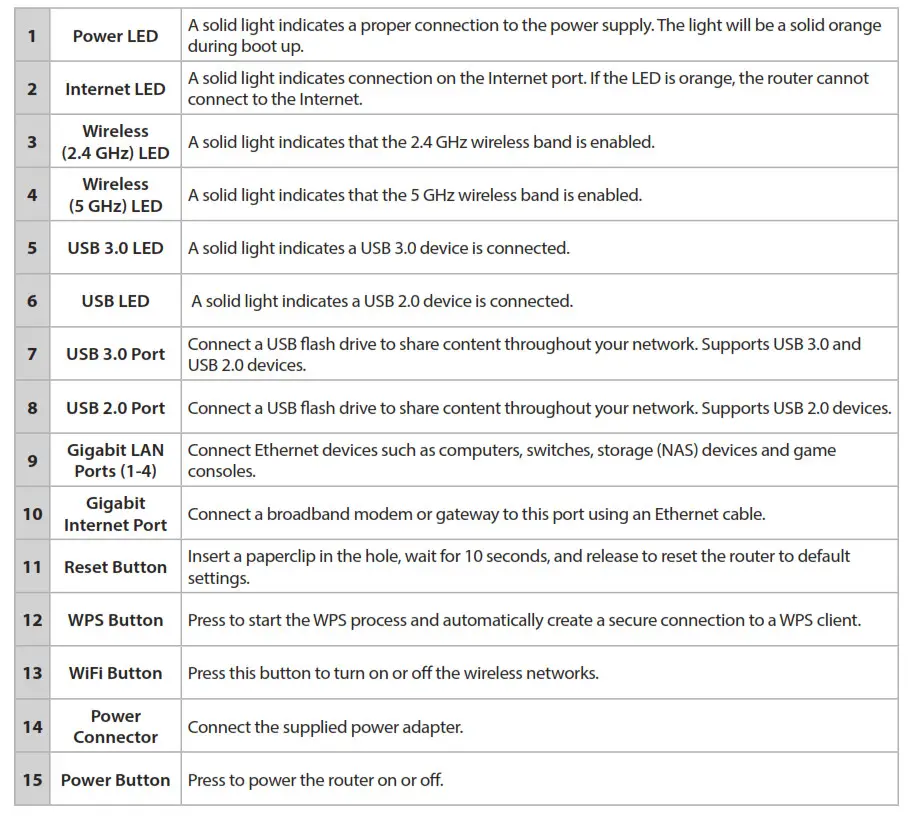
Before you Start
- Users with DSL providers – If you are using a PPPoE connection, you will need your PPPoE user name and password. If you do not have this information, contact your Internet provider. Do not proceed until you have this information.
- Users with Cable providers – Make sure you unplug the power to your modem. In some cases, you may need to turn it off for up to 5 minutes.
Configuration
There are two ways to configure your router:
A. D-Link Wi-Fi app – Use a mobile device with the D-Link Wi-Fi app.
B. Web Browser – Use a web browser from your computer. Refer to the Web Browser Configuration section for more information.
A. D-Link Wi-Fi App Setup
- Scan the code below or search “D-Link Wi-Fi App” (App Store or Google Play) to download the D-Link Wi-Fi App to your iPhone, iPad, or Android device.
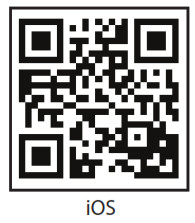
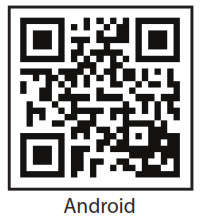
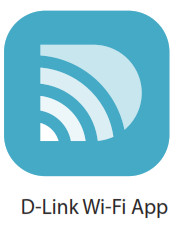
iOS: http://qrs.ly/9m5rot2 - Once installed, launch the app. Please follow the on-screen instructions to complete the setup.
Note: To reconnect to your router, launch your wireless utility, select the new Wi-Fi Network you created, and then enter your new Wi-Fi password.
NOTE: If your DSL or cable modem uses a battery backup when asked to unplug the power on your modem, please remove the backup battery and ensure all lights are off on the modem. Refer to the modem’s user manual if required.
B. Web Browser Configuration
Connect your Router
- Unplug the power to your DSL or Cable modem.
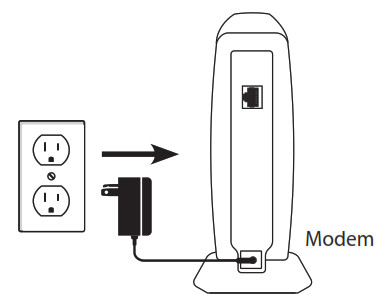
NOTE: If your DSL or cable modem uses a battery backup, please remove the backup battery and ensure all lights are off on the modem. Refer to the modem’s user manual if required. - Connect an Ethernet cable from the Internet port of the router to the Ethernet port on your DSL or Cable modem.
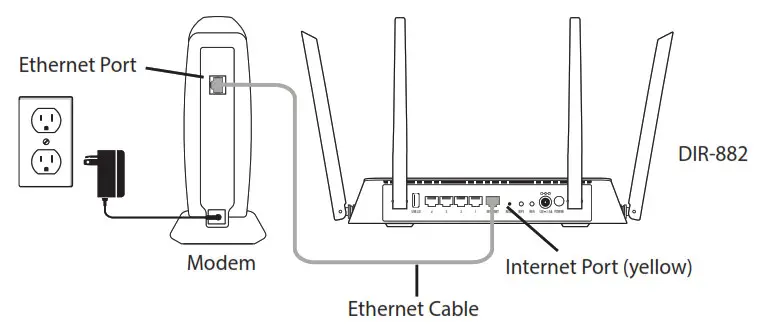
- Plug the power back into your DSL or cable modem. Please wait about one minute before continuing.
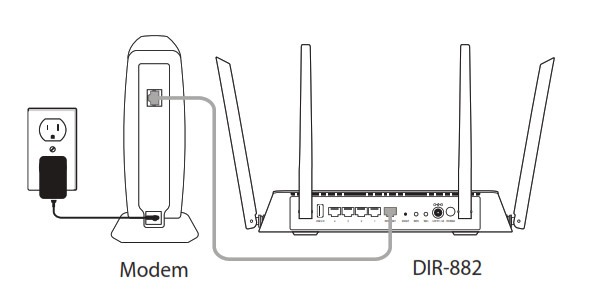
- Plug the power adapter into your router and connect to an available power outlet or surge protector. If the Power LED does not light up, press the Power button on the back of the router.
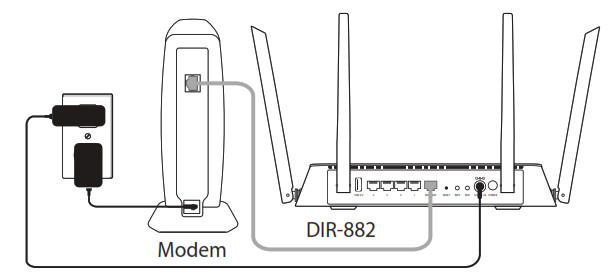
- After the router has powered up, verify that the Power and Internet LEDs are both lit. Proceed with router configuration.
- Connect another Ethernet cable from the Ethernet port on your computer to one of the LAN ports on the router. You can also connect wirelessly to the router with your computer. Use the supplied Wi-Fi Configuration Card for the Wi-Fi network name (SSID) and Wi-Fi password of the router.
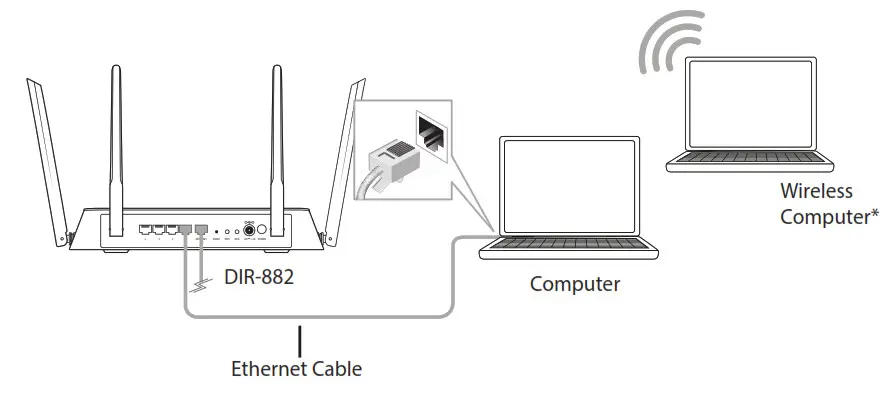
- Open a web browser (e.g. Internet Explorer, Chrome, Firefox, or Safari) and enter http://dlinkrouter.local./ or the IP address of the router (http://192.168.0.1).

- When the Welcome screen appears, click Next to continue.

- The router will automatically detect your Internet connection type. If it cannot, then select your Internet connection and click Next to continue.
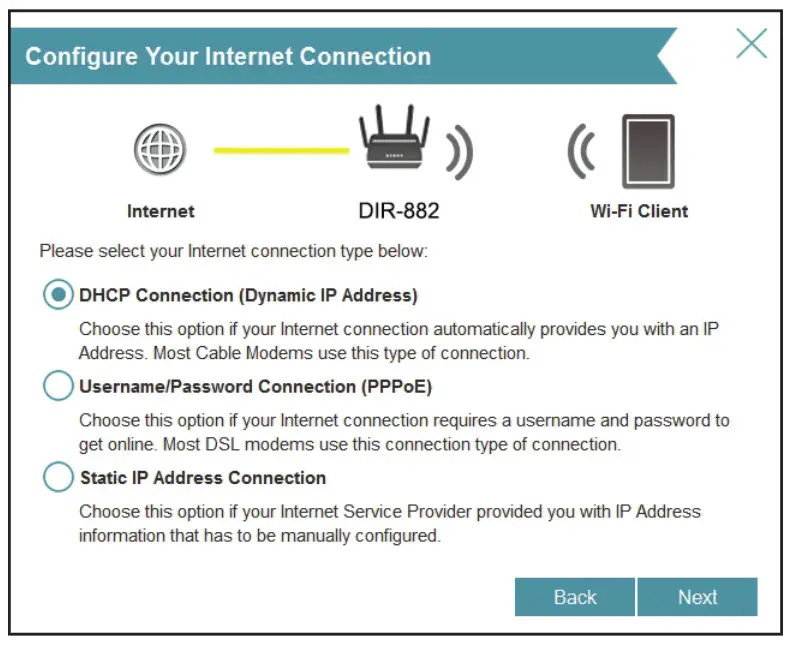 For DSL (PPPoE) users, enter your PPPoE user name and password supplied by your ISP. Click Next to continue.
For DSL (PPPoE) users, enter your PPPoE user name and password supplied by your ISP. Click Next to continue.
 If you have a Static IP connection, enter the IP information and DNS settings supplied by your ISP. Click Next to continue.
If you have a Static IP connection, enter the IP information and DNS settings supplied by your ISP. Click Next to continue.

- Create a name and password for your Wi-Fi Network. Your wireless devices (i.e., tablets, smartphones, and laptops) will need to have this information entered to be able to connect to your wireless network. Click Next to continue.
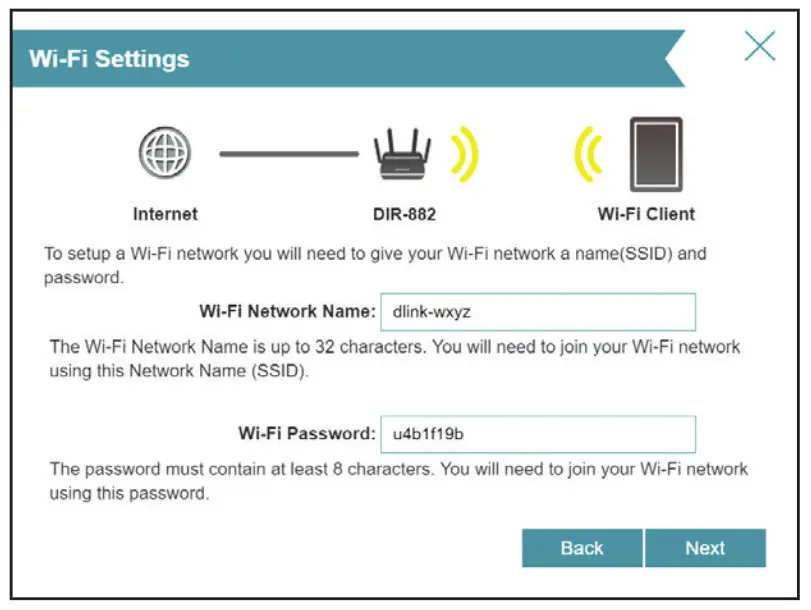
- Continue with the Setup Wizard to finish configuring your DIR-882 router. Once completed, the Internet LED will turn green indicating that your router is connected to the Internet.
Congratulations! You have completed the router installation.
Troubleshooting
How do I connect my wireless devices to the DIR-882 router?
- Open your wireless network utility that displays available wireless networks.
- Select the Wi-Fi Network name you assigned in the wizard and connect.
Note: If you did not run the setup wizard or you reset the router to its default settings, refer to the Wi-Fi Configuration Card included for the default Wi-Fi Network Name and Wi-Fi Password.
You can also connect wireless devices to the DIR-882 router using WPS:
- Press the WPS button on the DIR-882 for three seconds.
- Within one minute press the WPS button on your wireless device.
- Allow up to two minutes to connect.
Note: Some devices may require you to log in to a utility to start the WPS process. Refer to the user manual of the device you want to connect to the router if you do not know how to start the WPS process.
How do I change the wireless settings on the DIR-882 router?
- Open a web browser (e.g., Internet Explorer, Chrome, Firefox, or Safari) and enter http://dlinkrouter.local./ You can also enter the IP address of the router (http://192.168.0.1).
- At the login screen, enter the router password you created in the wizard.
- Go to Settings > Wireless to create a new Wi-Fi network name (SSID) and Wi-Fi password.
*Documentation available at:
United States: http://support.dlink.com/DIR-882
Canada: http://support.dlink.ca/DIR-882
GPL Code Statement
This D-Link product includes software code developed by third parties, including software code subject to the GNU General Public License (“GPL”) or GNU Lesser General Public License (“LGPL”). As applicable, the terms of the GPL and LGPL, and information on obtaining access to the GPL code and LGPL Code used in this product, are available to you at: http://tsd.dlink.com.tw/GPL.asp
The GPL Code and LGPL Code used in this product is distributed WITHOUT ANY WARRANTY and is subject to the copyrights of one or more authors. For details, see the GPL code and the LGPL code for this product and the terms of the GPL and LGPL.
Written Offer for GPL and LGPL Source Code
Where such specific license terms entitle you to the source code of such software, D-Link will provide upon written request via email and/or traditional paper mail the applicable GPL and LGPL source code files via CD-ROM for a nominal cost to cover shipping and media charges as allowed under the GPL and LGPL. Please direct all inquiries to:
Email: [email protected]
Snail Mail:
Attn: GPLSOURCE REQUEST
D-Link Systems, Inc.
17595 Mt. Herrmann Street
Fountain Valley, CA 92708
GNU GENERAL PUBLIC LICENSE Version 3, 29 June 2007
Copyright (C) 2007 Free Software Foundation, Inc. <http://fsf.org/>
View the full GPL Code Statement at http://www.gnu.org/licenses/gpl.html
Technical Support
Having trouble installing your new product? D-Link’s website contains the latest user documentation and software updates for D-Link products. U.S. and Canadian customers can contact D-Link Technical Support through our website.
United States
Internet: http://support.dlink.com
Canada
Internet: http://support.dlink.ca

Version 1.01_128X188
April 7, 2018
610000008550
©2018 D-Link Corporation/D-Link Systems, Inc. All rights reserved. D-Link and the D-Link logo are registered trademarks of D-Link Corporation or its subsidiaries in the United States and other countries. iPhone, iPad, and iPod touch are registered trademarks of Apple Inc. Android is a trademark of Google, Inc. Other trademarks are the property of their respective owners. Maximum wireless signal rate derived from IEEE Standard 802.11ac, 802.11g, and 802.11n specifications. Actual data throughput will vary. Network conditions and environmental factors, including volume of network traffic, building materials and construction, and network overhead, lower actual data throughput rate. Environmental factors will adversely affect wireless signal range. Product specifications, size, and shape are subject to change without notice, and actual product appearance may differ from that depicted on the packaging. Visit www.dlink.com for more details.